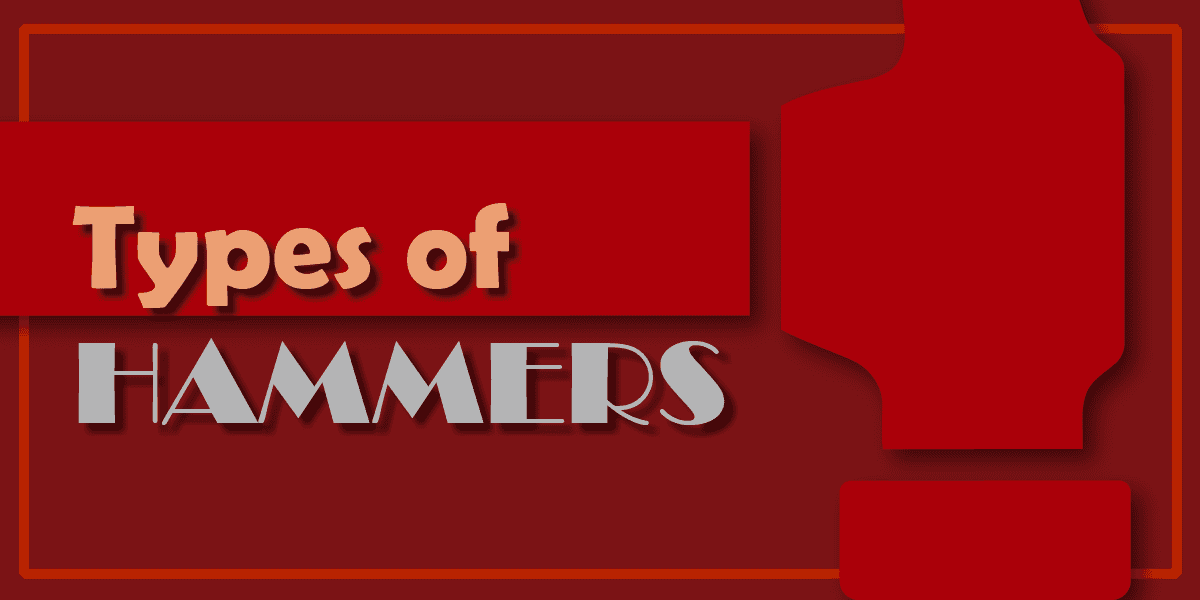To a hammer, everything looks like a nail.
Except that some hammers aren’t meant for nails at all.
The hammer, one of the first tools in human history and descended from a lowly rock, is now highly specialized and employed in various tasks from construction to crafting to animal care.
No doubt, you have a couple in your tool chest, but there are well over a dozen styles and types, some of which you may never see unless you’re a welder or metalworker.
Types of Hammers & Their Uses
1. Claw Hammer
- Features a flat striking face on one side and a curved claw on the other.
- Used for driving nails into wood and removing them.
- Best for carpentry and general household tasks.
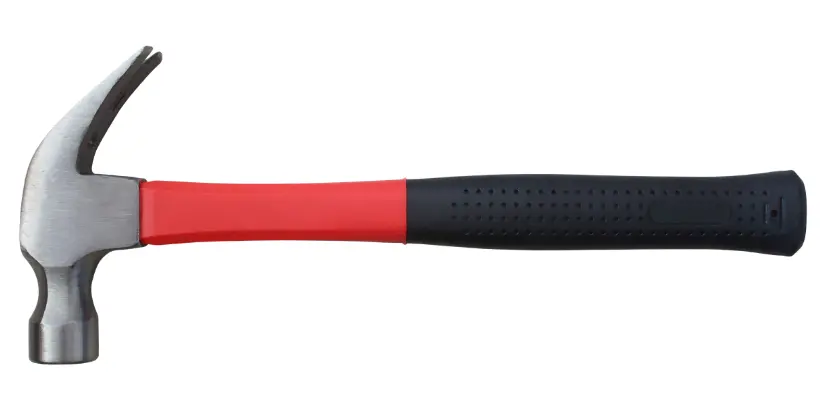
A claw hammer is the most common type for driving and pulling nails.
2. Ball Peen Hammer
- Has a flat face on one side and a rounded (peen) face on the other.
- Used in metalworking for tasks like peening (surface hardening) and shaping metal. Also used for striking chisels and punches.
3. Sledgehammer
- A large hammer with a long handle and a heavy, double-faced head.
- Designed for delivering powerful blows.
- Suitable for demolition work, driving stakes, and breaking concrete.
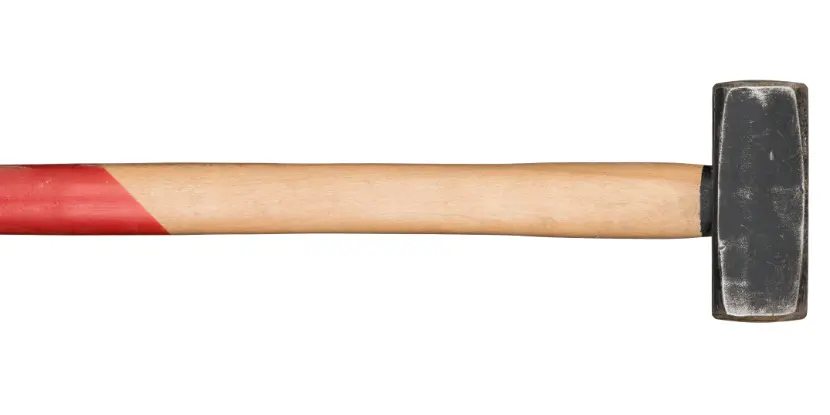
A sledgehammer is suitable for demolition work, driving stakes, and breaking concrete
4. Mallet
- Typically has a wooden or rubber head.
- Used to strike materials without marring the surface, such as tapping wooden joints together or working with chisels.
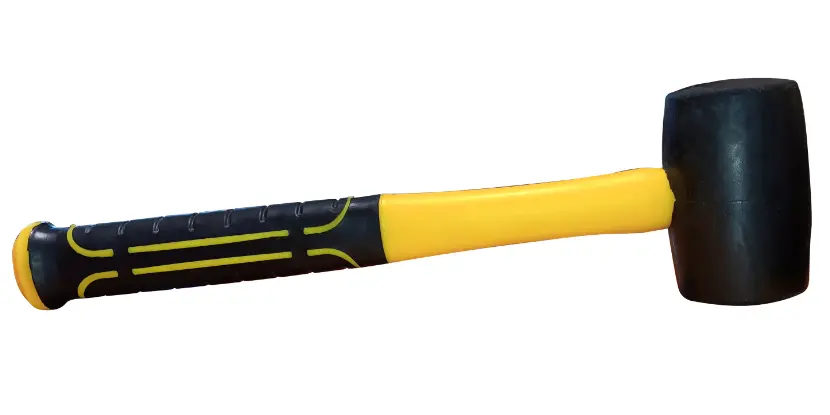
A rubber mallet delivers softer blows to prevent damage to the workpiece.
5. Club Hammer (Lump Hammer)
- A small sledgehammer with a short handle.
- Suitable for light demolition work, driving masonry nails, and cutting stone or metal with a chisel.
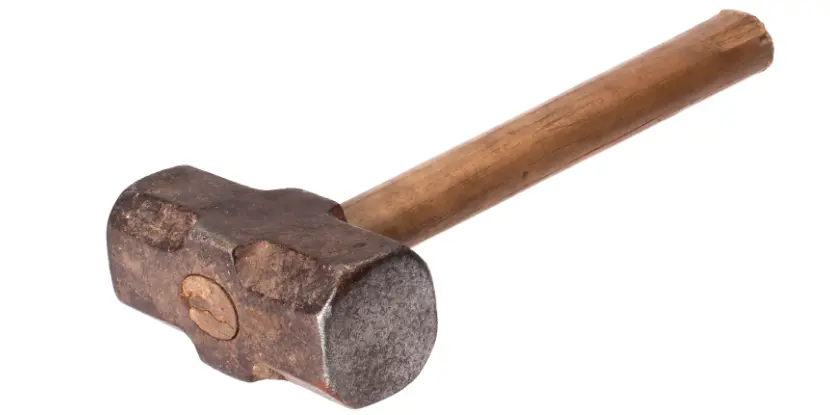
A club hammer is used for light demolition work, driving masonry nails, and cutting stone or metal with a chisel.
6. Cross Peen Hammer
- Features a flat face on one side and a wedge-shaped peen perpendicular to the handle on the other.
- Commonly used in metalworking for shaping metal and starting panel pins or tacks.
7. Tack Hammer
- A lightweight hammer with a small, often magnetized, face.
- Designed to drive small tacks or nails.
- Frequently used in upholstery work.
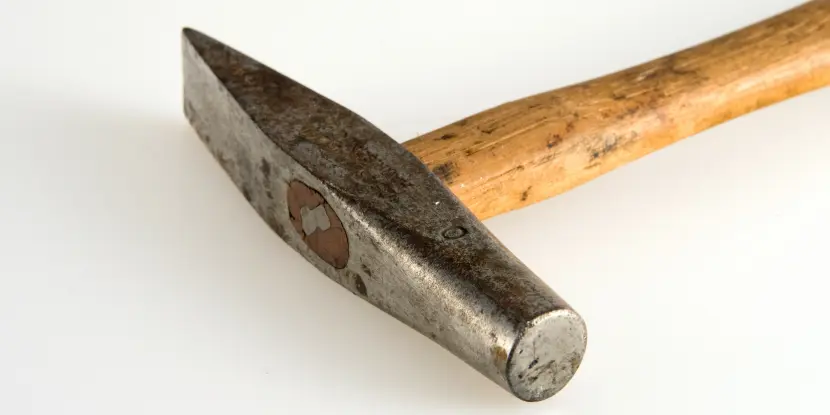
A tack hammer is designed to drive small tacks or nails.
8. Dead Blow Hammer
- Contains an internal cavity filled with sand or lead shot to minimize rebound.
- Provides controlled force with minimal rebound, ideal for precision work in assembly or automotive applications.
9. Framing Hammer
- Similar to a claw hammer but with a longer handle and heavier head.
- Designed for framing carpentry work, driving large nails quickly, and performing light demolition.
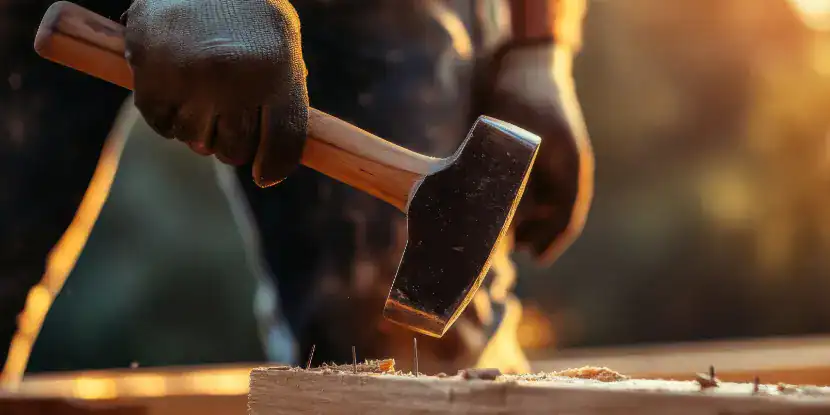
A carpenter drives nails with a framing hammer.
10. Brick Hammer
- One end has a flat face, and the other has a chisel-like blade.
- Used by masons to split bricks cleanly and chip away excess mortar.
11. Blacksmith’s Hammer
- A heavy hammer with a flat face and a peen (which can be cross, straight, or diagonal).
- Employed in forging metal or shaping hot steel on an anvil.

A blacksmith shapes hot metal with a hammer.
12. Soft-Faced Hammer
- Has replaceable soft faces made of plastic, rubber, or copper.
- Ideal for striking surfaces without causing damage.
- Commonly used in automotive and assembly work.
13. Planishing Hammer
- A lightweight hammer with a highly polished face.
- Used in metalworking to smooth and finish metal surfaces by removing minor imperfections.
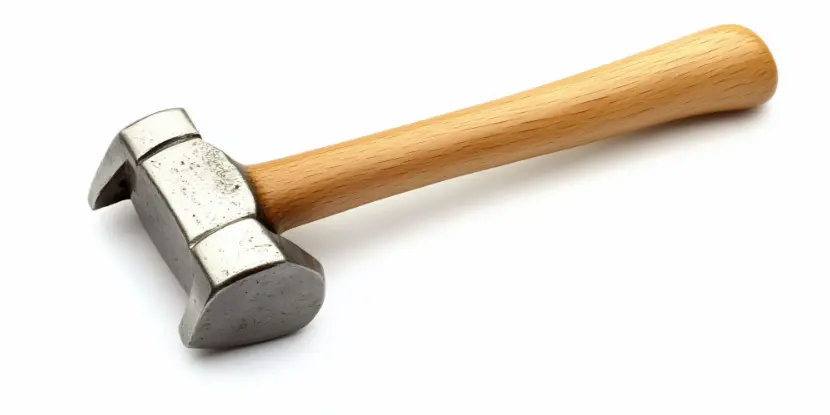
A planishing hammer is used in metalworking to smooth and finish metal surfaces.
14. Scaling Hammer
- Features a chisel-like face and a pick.
- Used to remove scale, rust, and other surface coatings from metal surfaces.
15. Slaters Hammer
- Combines a hammer with an axe blade and a spike.
- Used in roofing to cut and shape slate tiles and drive nails.
16. Upholstery Hammer
- A small, lightweight hammer, often with a magnetic face.
- Designed for driving tacks and small nails in upholstery work.
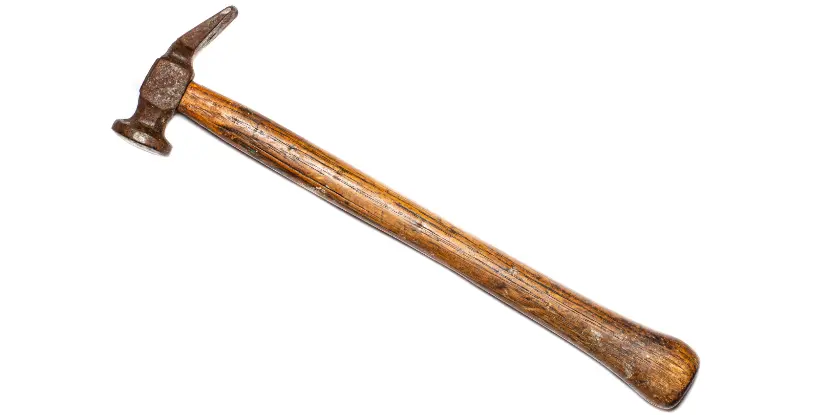
A vintage upholstery or tack hammer: still pounding after all these years!
17. Welder’s Chipping Hammer
- Has a pointed tip and a chisel end.
- Used to remove slag from welds and clean the welding area.
18. Drywall Hammer
- Features a hatchet-like blade on one side and a checkered face on the other.
- Used to score drywall, drive nails, and create indentations for nail heads.
19. Rock Hammer
- Also known as a rock pick or geological hammer.
- Features a flat face on one side and a pointed tip on the other.
- Used by geologists to break rocks and examine mineral formations.
- Also used by Andy Dufresne to escape Shawshank State Prison.
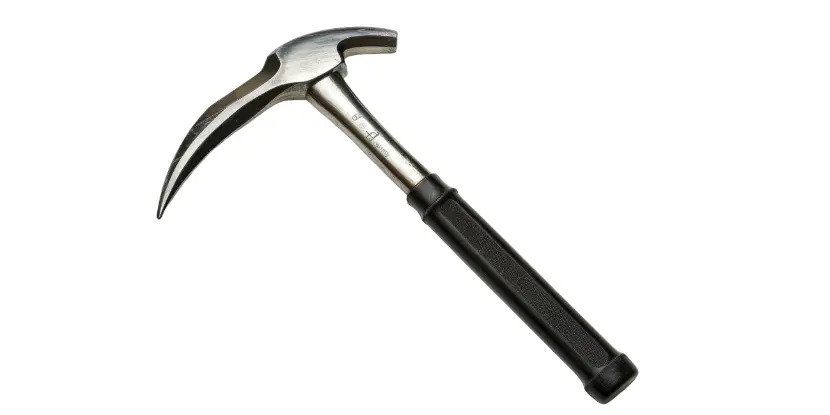
A rock hammer and a bit of elbow grease set Andy Dufresne free from Shawshank State Prison.
20. Bradawl Hammer
- A small, lightweight hammer with a screwdriver-like handle and a pointed end.
- Used to make pilot holes for screws or nails, particularly in wood.
21. Power Hammer
- A mechanical hammer powered by compressed air, steam, or electricity.
- Provides high-speed repetitive strikes for shaping metal.
- Commonly used in blacksmithing and industrial forging.
22. Mike Hammer
- A quintessential hard-boiled private detective created by author Mickey Spillane.
- Introduced in 1947.
- Characterized by a relentless pursuit of justice, a tough, no-nonsense demeanor, and a propensity for violence.
So, if you still use a rock to assemble your Ikea furniture or hang your pictures, be aware that there are much better tools for the job.
The abovementioned hammers come in various sizes and weights, allowing for more precision or power. Choose your hammer wisely, grasshopper, and pound away!
FAQs: Types of Hammers
Q: Can hammers be used interchangeably?
Some hammers can serve multiple purposes, but it’s best to use the appropriate tool for the job to avoid damage or injury.
Q: Are there any safety tips when using hammers?
Always wear eye protection and gloves. Use proper techniques to avoid hitting your fingers or other body parts. Strike in a controlled manner rather than swinging wildly.
Q: What materials are hammers typically made from?
Most hammerheads are made from high-carbon or drop-forged steel. Handles can be made from wood, fiberglass, or steel, each offering different benefits, such as vibration reduction or added strength.
Q: How should I maintain my hammers for longevity?
Keep hammers clean and dry to prevent rust. Regularly inspect the handle and head for signs of damage. If the handle is wooden, it can be sanded and treated with linseed oil for protection. Tighten loose heads and replace damaged parts as necessary.
Q: Can I use a rubber mallet for all woodworking tasks?
A rubber mallet is not ideal for tasks requiring more force. A wooden mallet or a steel hammer may be better for those tasks.
Q: Are there ergonomic hammers available to reduce fatigue?
Many manufacturers offer ergonomically designed hammers featuring vibration-dampening grips, lightweight materials, and balanced heads to reduce user fatigue and the risk of injury during prolonged use.
Q: What type of hammer is best for roofing projects?
A slater’s hammer is often used for roofing, especially with slate tiles, due to its combination of a hammer and ax blade. A roofing or drywall hammer suits general roofing tasks due to its hatchet-like blades for cutting materials.
Q: How can I choose the right hammer weight for my project?
The task at hand should determine the weight of a hammer. Lighter hammers, around 8 to 12 ounces, are suitable for light tasks and detailed work. Heavier hammers, from 16 to 20 ounces, are better for driving nails and demolition. Always select a weight you can comfortably manage.

